- 한국어
- English
- 日本語
- 中文
- العربية
- Español
- Français
- Deutsch
- Pусский
- Tiếng Việt
- Indonesian
By Honorary Reporter Minnath Azeez from Sri Lanka
Photos = Cheonggok Fan Museum, Flickr, National Palace Museum of Korea, Seoul Museum of History
Summer in Korea means sweltering heat that is usually remedied by air conditioners or portable fans. In the past, however, Koreans cooled off mostly using buchae (handheld fans).
Besides using them to endure the hot weather, the fans were used in everyday life like to light and put out a fire using charcoal. They were also gifts on special days as a custom. During the traditional festival Dano, which falls on May 5 under the lunar calendar, a fan represented love and care for someone at a time of hot weather. The fans the king gave to his ministers were called Danoseon.
Recipients of the fans customized them by drawing butterflies and willow branches and writing poetry. The fans customized by famous writers and artists were passed down for generations and survive to the present day.
During the Joseon Dynasty (1392-1910), buchae symbolized status among aristocrats and commoners. Those from the higher class never went outside without a fan and used it when reciting poems to a beat or singing pansori, or traditional lyrical opera. In awkward or embarrassing situations, the fan was a great escape tool.
Buchae was designed utilizing a variety of materials and shapes, but its users also personalized them. Aristocrats and the yangban (the ruling class) decorated their fans with gold, silver, amber and jade, while the royal family owned fans large enough to hold over 50 spokes.
The number of spokes showed the difference in class of Joseon society at the time. The highest number of 50 was reserved for fans of the royal family. Aristocrats had those with a maximum of 40 and the commoners less than that.
A women's fan had a wide and flat surface area with a handle, and was used in summer for cooling off, lighting a fire, sitting in the fields and sorting grains. But for the royal family and gisaeng, or female courtesans who provided artistic entertainment and talk to men of the upper class, the fans were more of an accessory and featured the same designs as those for men.
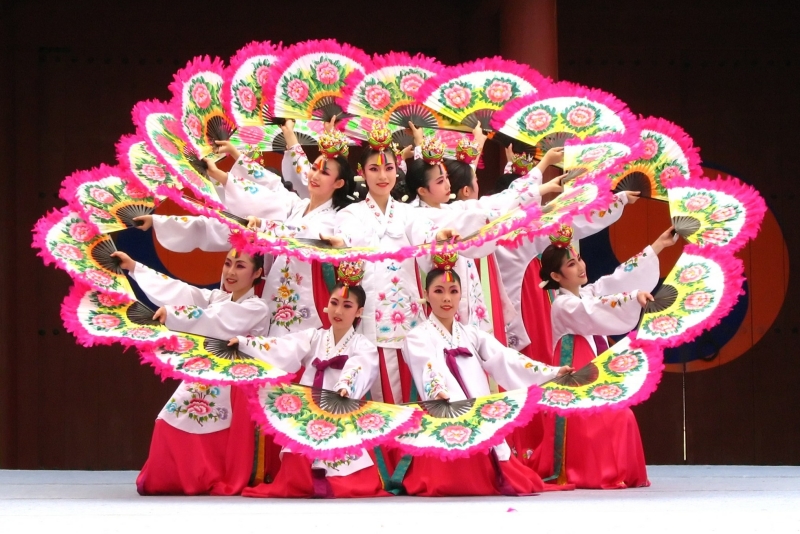
Buchaechum is a traditional dance using fans.
Buchae is also used in dance. The buchaechum (fan dance) was influenced by folk dances, those used in shamanistic rituals and others performed at the Joseon royal court. It was traditionally performed by women at celebratory events, with the fans decorated with pink peonies to create formations of birds, waves, dragons and more.
The fans can be classified into two main types based on shape. Banggu buchae is round with a flat design and made from silk or paper, while the foldable jeop buchae is made of paper. The latter type was mainly used by men when leaving the house and the former by both sexes at home.
Types
Taegeukseon
This banggu buchae was designed with the iconic red, blue and yellow taegeuk mark used to represent Korea at international events like the opening ceremony of the 1988 Seoul Summer Olympics. This fan's design was based on the yin-yang concept in which the colors represented the universe's flow within a circle.
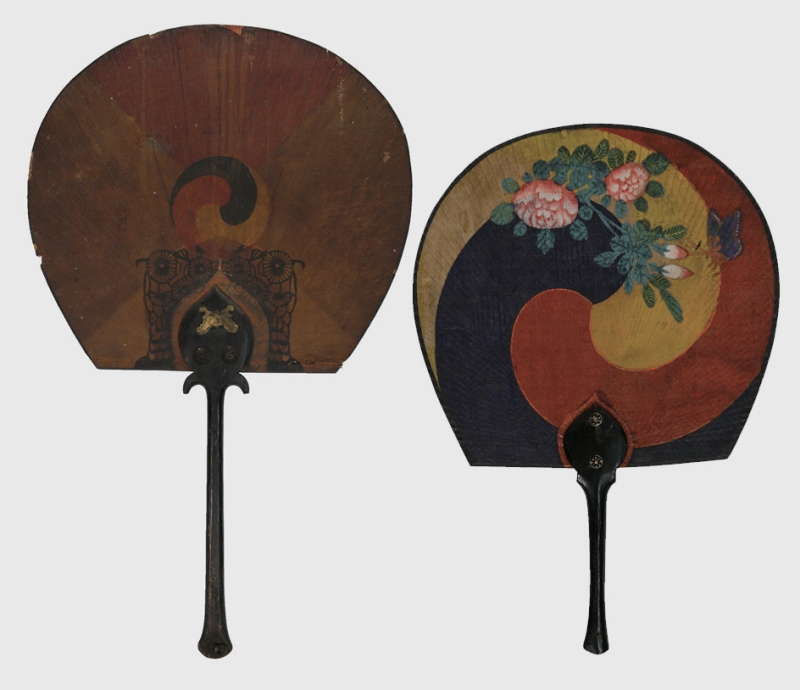
Taegeukseon
Paldeokseon
This is another banggu buchae with a flat surface and commonly used by farmers. The fan's name means "eight-use fan" and was used for things like blocking the sun and rain or creating a cool breeze for sleep.
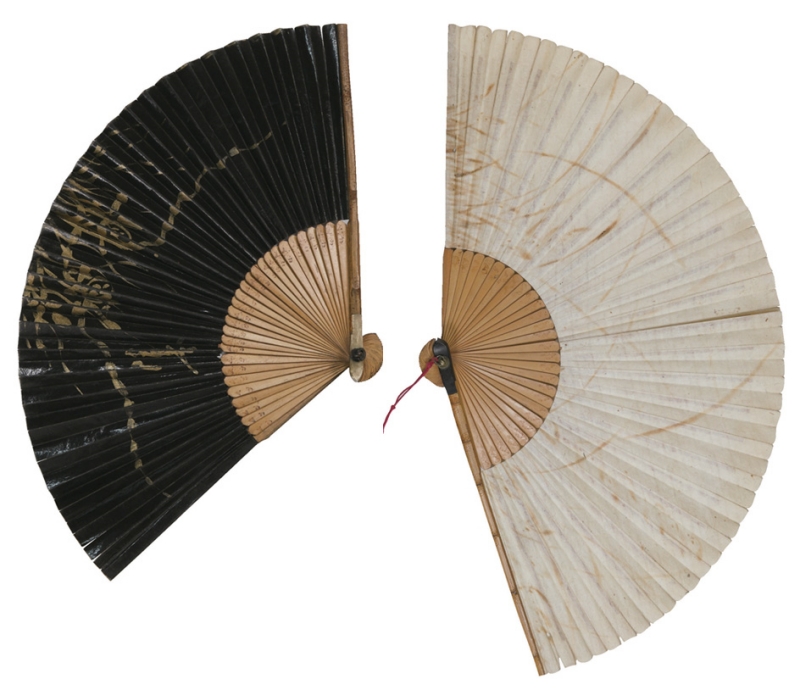
Hapjukseon
Hapjukseon
Made with paper and glued on the spokes, this is a foldable jeop buchae whose name means "combined bamboo fan." As famed craftwork dating back to the Goryeo Dynasty (918-1392), this fan was made from Hanji, or traditional paper made from mulberry bark. The spokes are made of bamboo and the higher the number of spokes, the more valuable the fan. A metal stud (sabuk) is added when designing the fan. A ring attached to a sabuk showed the social status of its owner and was also used to hang decorations.
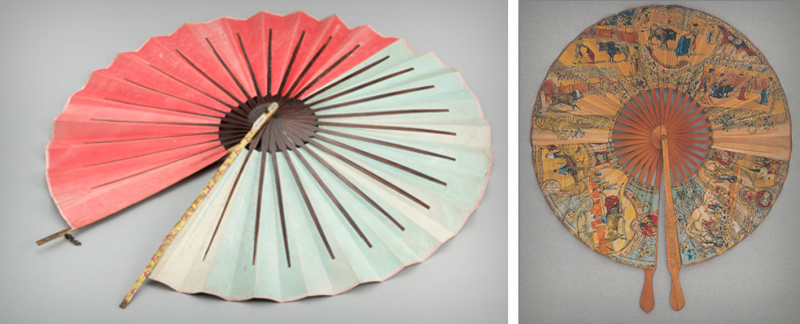
Yunseon
Yunseon
This jeop buchae can be opened in the form of a wheel and has two handles on both ends. Unlike other fans used to cool off, this was mainly used to block the sun.
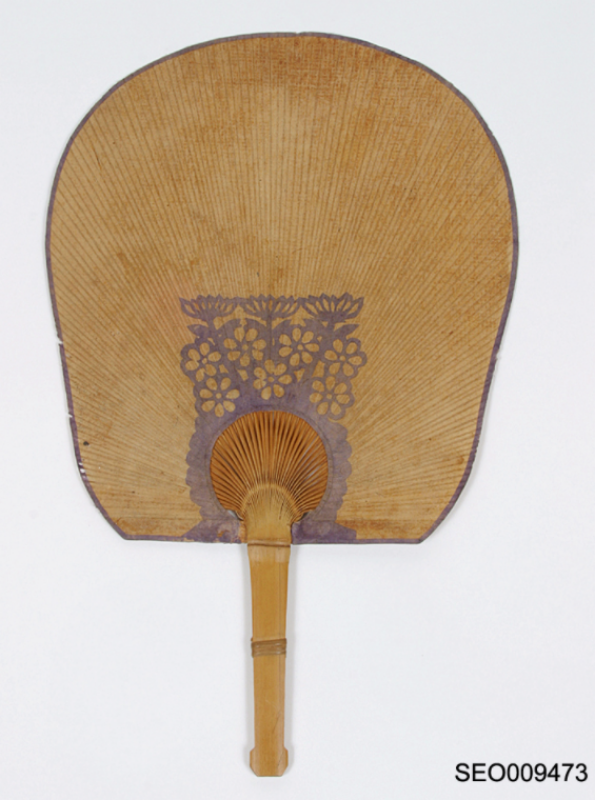
Miseon
Miseon
This Danseon (basic type of Korean fan) features a handle resembling a fish tail.
kalhong617@korea.kr
*This article is written by a Korea.net Honorary Reporter. Our group of Honorary Reporters are from all around the world, and they share with Korea.net their love and passion for all things Korean.